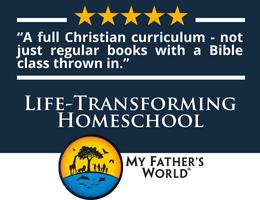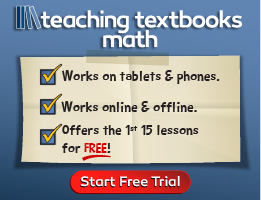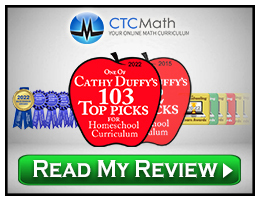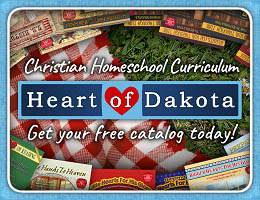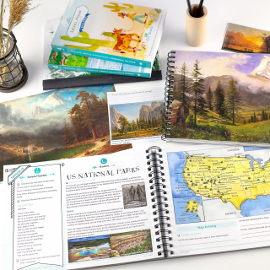This review covers The Good and the Beautiful’s (TGTB) Language Arts courses for grades three through five. I review courses for younger students separately because they share similar features and focus heavily on phonics and reading. The third-grade course continues to focus on phonics and reading, but it also covers other subjects as do the courses for fourth and fifth grades.
Levels 3, 4, and 5 teach reading skills, spelling, writing, grammar, punctuation, usage, literature, vocabulary, geography, art skills, and art appreciation. For more effective learning, coursework in all these areas is often integrated around lesson themes. Lessons are laid out in the order in which each activity is to be completed, making it easy for parents and students to know what to do. This is especially important because of the integration of activities from so many subject areas.
Course Components
All TGTB language arts courses for kindergarten through eighth grade are available free as downloadable PDF files, but you can also purchase printed books. Sets of the printed books do not include the answer key books since those are available free online. However, printed answer keys are available for Level 3 and Level 5. If you download the PDFs, you need to print out only the pages on which children need to write, so printing might be more practical than you think.
For Level 3, the course set consists of the Level 3 Course Book, Level 3 Spelling Practice Book, and a set of four phonics read-together books. You also need two, free Good and Beautiful apps—one for letter tiles and the other to access videos and audio narrations. The videos are optional and repeat instruction that is already included in the lessons, but the audio narrations are essential.
The course set for Level 4 includes the Level 4 Course Book, Level 4 World Biographies Reader, Level 4 Personal Reader, and the Level 4 Spelling & Writing Workshops book.
For Level 5, the components are the Level 5 Course Book, a set of Geography & Grammar Cards, the Level 5 book set that includes four, chapter books for reading, and the Watercolor Around the World set (instruction book and 12 pages of templates). Note that spelling and writing workshops are incorporated into the course book, and watercolor art lessons are taught from a separate book.
The course books for each level, Level 3 Spelling Practice Book, Level 4 Spelling & Writing Workshops, and Watercolor Around the World instruction book are in full color and include lovely artwork, photos, and other illustrations. Students write directly in the course books and the spelling books. The third-grade readers are full-color, while fourth- and fifth-grade readers are black and white with blackline drawings.
How The Courses Work
The 412-page course book for Level 3, the 270-page course book for Level 4, and the 400-page course book for Level 5 present one lesson per day for four days each week.
Level 3 is parent-directed, with instructions for the parent in a blue font and text to read to the child in a black font. Levels 4 and 5 have very brief instructions for the parent at the beginning of each lesson, sometimes with sentences to dictate. Otherwise, the lessons are written directly to students so they can work independently. They just follow along in order.
Instructional material in the course books covers grammar, usage, punctuation, vocabulary, geography, and art, and it is accompanied by exercises, sentence diagramming, map work, art images, art-activity instructions, space for writing summaries of stories from the readers, and occasional recipes (e.g., making Scottish Shortbread when Level 4 students learn about Scotland). The course books also let students know when they are to complete reading assignments in the readers, the lessons in their Spelling Practice Book (for Level 3), Spelling & Writing Workshops book (for Level 4), and the activities using Watercolor Around the World and Geography & Grammar Cards (for Level 5).
Level 3 lessons might take an hour or more per day (four days per week), with parental involvement much of the time. Lessons in Level 4 and Level 5 should take about 30 minutes per day, four days per week, with direct teaching time only two to seven minutes per day. Adding independent reading time required for fourth and fifth graders should make the total lesson and reading time about an hour most days. That’s a surprisingly brief time to cover so many subject areas.
Subject Area Coverage
In many language arts programs, the instruction on grammar, usage, and punctuation has the potential to become redundant. To avoid needless grammar practice, Level 3 and Level 4 have section reviews covering many lessons. If students struggle with a concept while completing the review, parents can assign additional practice exercises included within the review exercises—but only if a student needs additional practice. This is a brilliant idea! Level 5 has grammar, usage, and punctuation instruction in the course book, and students practice with the Geography & Grammar Cards. When each card has been mastered, it is set aside to concentrate on only the cards that have not been mastered. These strategies don't eliminate all redundancy, but they help. Many other activities are included for teaching grammar, usage, and punctuation, including sentence diagrams.
For Level 3, the Spelling Practice Book is an unusual size—11” wide by 4.25" tall. It presents lessons and activities with two pages per lesson. Spelling lessons are incorporated into the lesson plans about every other day. In Level 4, the Spelling & Writing Workshops lessons correlate with the course book to concentrate on spelling and composition skills. The much larger Level 5: Course Book has spelling and writing workshops built into the lessons. In Levels 4 and 5, students will do a spelling workshop one day and a writing workshop the next day, continually alternating between them.
The spelling lessons have students work with rules, spelling patterns, base words, suffixes, prefixes, contractions, and challenging words. Level 3 includes specified spelling words in each lesson and a list of additional words near the beginning for parents to use as needed. In Level 4, a chart of Challenging Spelling Words in the appendix—with words such as wrist, tongue, nephew, and scissors—is the source for some of the words the student will study. Students are initially quizzed on those words to identify those they need to work on. An additional list with harder words is available for students who need more of a challenge. Level 5 has students work with an initial list of words as well as many others each week to develop spelling skills. The spelling activities are very creative, varying from lesson to lesson. For instance, page 27 in the Level 4 Course Book has an image with 17 trees spread out over the page. Students are to draw roads between the trees and then write their words on the roads. The lessons include a few traditional exercises, but most activities are unique and are designed to suit various learning styles. There are no traditional spelling tests. This entire approach to spelling is very innovative.
Composition instruction is very well developed in these courses. Many different strategies are used as children learn to write sentences, paragraphs, short narratives, and poetry, beginning in Level 3. Level 4 expands to include letters and informative essays, including instruction on how to proofread and how to rewrite research information for reports (to avoid plagiarism). Level 5 teaches various types of essays, story writing, letter writing, book reviews, and poetry. Both the fourth- and fifth-grade courses sometimes have students work with excerpts written by well-known authors.
TGTB recommends adding both handwriting and typing courses to Level 3 and Level 4.
The integration of subject areas around themes occurs in several ways. For instance, when students learn about the artist Carl Frederik Aagaard in the Level 4 Course Book, they have a related, art-appreciation activity designed to inspire them to write a poem. In another instance, students read a story related to Italy. The course book has lovely artwork showing Italian landscapes that are tied in with an art activity as well as with Italy-related sentences for diagramming. This is followed immediately by a geography lesson about Venice, Italy. The integration often flows in this meandering fashion.
In Level 3 parents and children read through the four readers together with sections clearly marked for either the parent/teacher or the student to read. The student’s part is briefer, and the lines are spaced further apart. A practice page before each chapter in the readers has phonics review; vocabulary words with definitions and sample sentences; and challenging words that cannot be sounded out phonetically. Some practice pages explain the meanings of idioms that will appear in the chapter. In Levels 4 and 5, children do a good deal of independent reading using the World Biographies Reader and the Personal Reader for Level 4 and four chapter books for Level 5. All readers include many stories about people of various racial and ethnic backgrounds, and many are set in different time periods or cultures. Reading comprehension and skill activities related to the readers are in the course books. In addition to the assignments in the readers, fourth and fifth graders are supposed to read for about 20 minutes a day from other literature on their level. Both reading and vocabulary skills are developed through many other activities in these courses.
For art, children learn about well-known artists, study artworks, and complete some art activities. The artworks included in Level 3 have online audio narrations for students to listen to. Level 4 students will learn to work with pastels, so they will need a set of chalk pastels, art tape, a spray fixative, and watercolor or pastel paper. Watercolor Around the World teaches Level 5 students advanced skills with watercolors through specific projects, so they will need a set of watercolors with at least 24 colors.
Geography instruction teaches basic concepts such as cardinal directions, map reading, and types of maps. The courses also focus on particular countries or geographic features such as Belgium, Brazil, the Amazon River, Mt. Everest, the Bahamas, the Mediterranean, and Washington D.C.
Summary
The streamlined layout of these courses makes them very easy to use, and the integration of subjects and innovative approaches offer promising alternatives that should work for many types of learners. It's hard to believe these are still free programs when so much work has obviously been devoted to their development. Even if you purchase the printed version of the courses, they are a terrific value.

